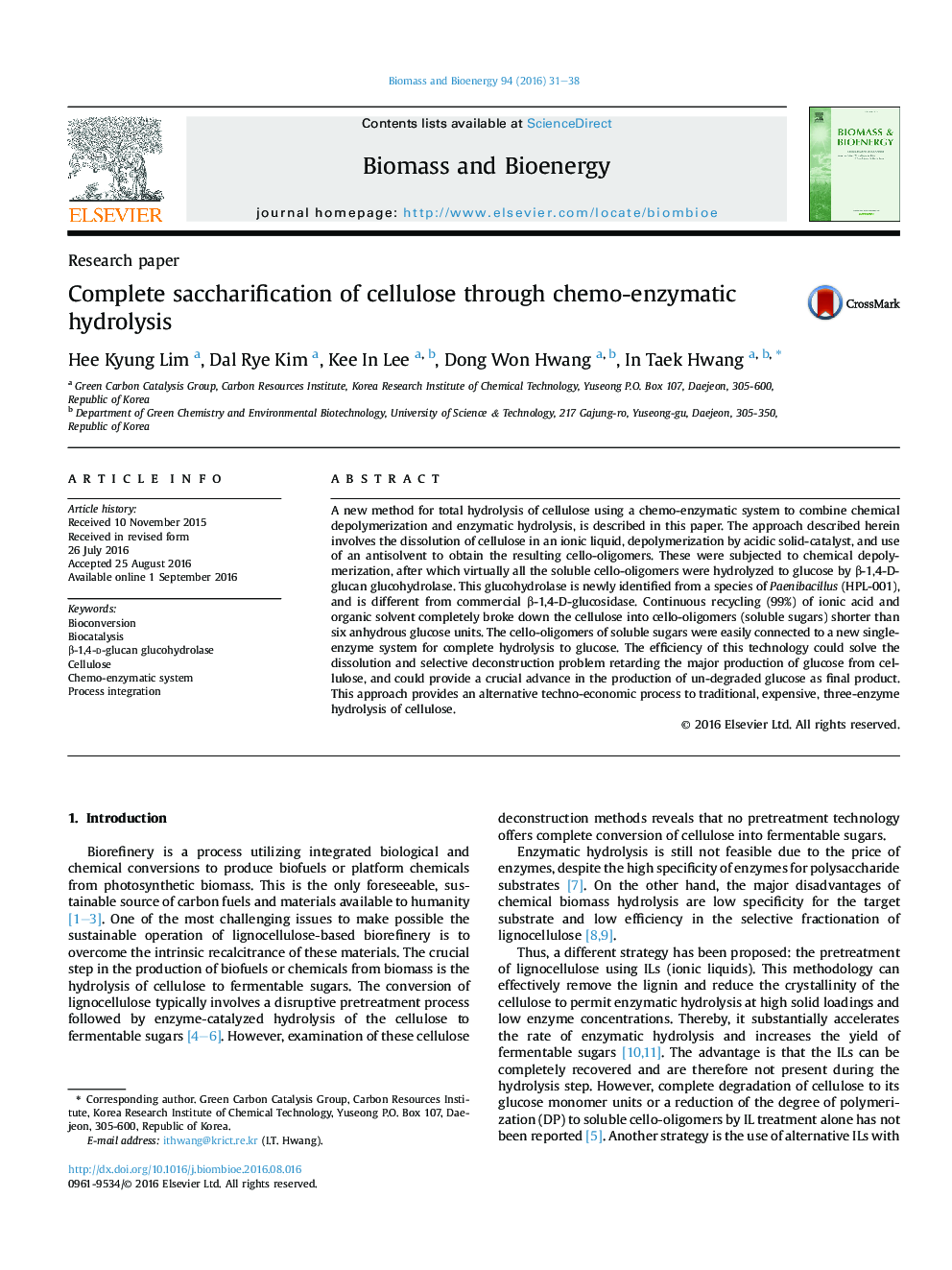| Article ID | Journal | Published Year | Pages | File Type |
|---|---|---|---|---|
| 7063121 | Biomass and Bioenergy | 2016 | 8 Pages |
Abstract
A new method for total hydrolysis of cellulose using a chemo-enzymatic system to combine chemical depolymerization and enzymatic hydrolysis, is described in this paper. The approach described herein involves the dissolution of cellulose in an ionic liquid, depolymerization by acidic solid-catalyst, and use of an antisolvent to obtain the resulting cello-oligomers. These were subjected to chemical depolymerization, after which virtually all the soluble cello-oligomers were hydrolyzed to glucose by β-1,4-D-glucan glucohydrolase. This glucohydrolase is newly identified from a species of Paenibacillus (HPL-001), and is different from commercial β-1,4-D-glucosidase. Continuous recycling (99%) of ionic acid and organic solvent completely broke down the cellulose into cello-oligomers (soluble sugars) shorter than six anhydrous glucose units. The cello-oligomers of soluble sugars were easily connected to a new single-enzyme system for complete hydrolysis to glucose. The efficiency of this technology could solve the dissolution and selective deconstruction problem retarding the major production of glucose from cellulose, and could provide a crucial advance in the production of un-degraded glucose as final product. This approach provides an alternative techno-economic process to traditional, expensive, three-enzyme hydrolysis of cellulose.
Related Topics
Physical Sciences and Engineering
Chemical Engineering
Process Chemistry and Technology
Authors
Hee Kyung Lim, Dal Rye Kim, Kee In Lee, Dong Won Hwang, In Taek Hwang,
